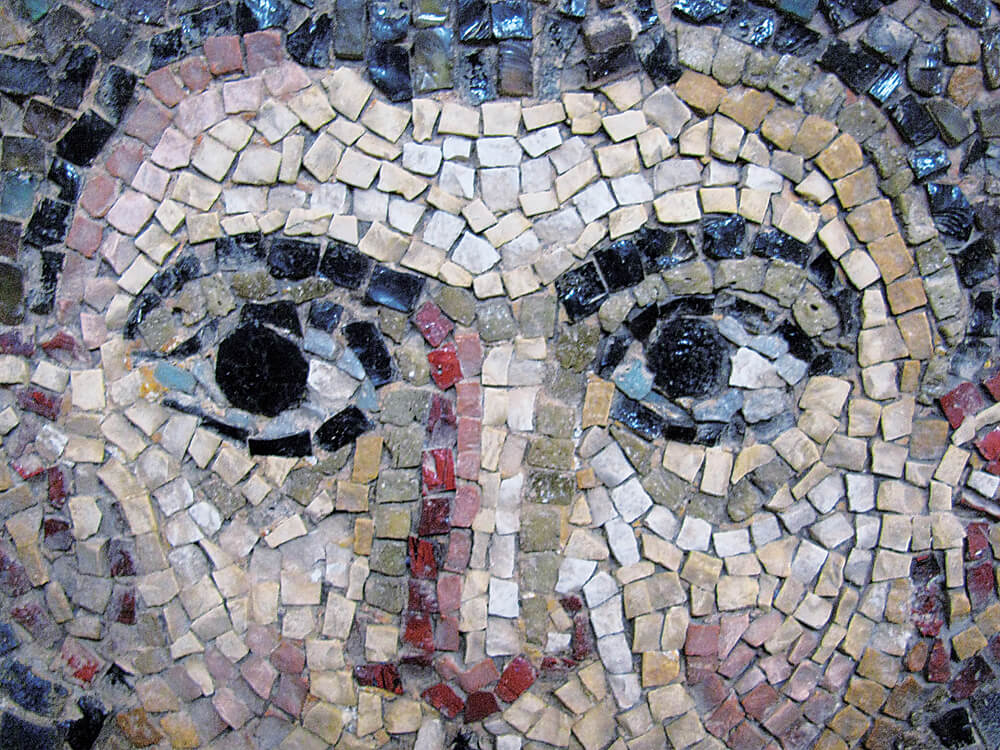The Nativity Church in Bethlehem is located over the cave that has been recognized from mid-second century as the place where Christ was born. The history of the building is known only partially. A first Basilica was erected in the 4th century, under Emperor Constantine and remade during the empire of Justinian, 6th c. The earliest mention of the existence of mosaics in the Basilica appears in some rather ambiguous texts of the 9th c., which refer to the mosaics representing the Nativity of Christ in the underground cave and the “Adoration of the Magi” on the front of the building.
Since the 14th c. the descriptions of pilgrims stated that the building was by far the most striking and beautiful one in the whole Holy Land [Bacci 2012]. An extensive mosaic programme decorated the walls of the Nativity Church. The upper portions of the walls were embellished with representations of the Tree of Jesse in the counter façade (western wall), the Annunciation in the triumphal arch and the “Virgin Mary with Child” flanked by “Abraham and David” in the apse. In the nave, the provincial synods of antiquity (northern wall), the seven ecumenical councils (southern wall) were accompanied by Christ’s ancestors and decorative bands.
In the upper part, around windows, full figure images of angels were displayed, while a selection of Gospel scenes were represented in the transept. In the cave, the mosaic surface seems to have extended not only to the small apse of the niche of Christ’s birthplace, decorated with the Nativity scene, but also to the vault of the cave [Bacci 2015].
The Basilica went through a series of events along the centuries, often complicated by the antagonism between the three religious communities ruling the holy site (Orthodox, Catholic and Armenian) and by the long Mamluke and later Ottoman dominations. The first references to a decay of the mosaics date back to the 15th c. Starting from the 17th c. visitors were unanimously disappointed by the decay of the building and of the mosaics. At the end of the 18th c. some remnants of the Tree of Jesse were still visible and the mosaics of the central apse had disappeared; the mosaics of the transept, of the nave and of the triumphal arch were still largely preserved, albeit in bad conditions. The Basilica was refurbished in 1842 in the one which has been transmitted up to 2013 [Bacci 2015].
Read the complete article on nardinieditore.it

